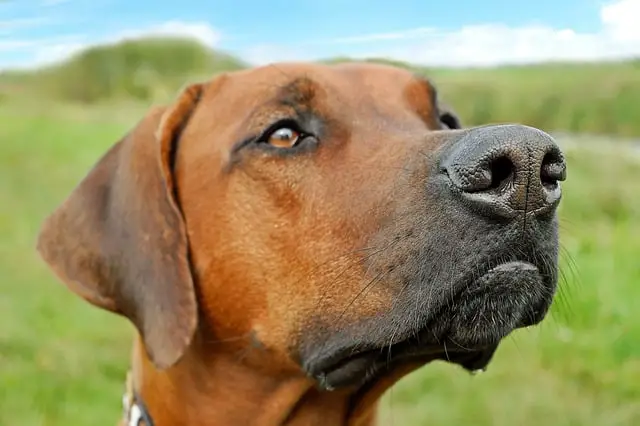
Nosebleeds in dogs can be frightening, but keep calm: in this article we see the possible causes of the problem, diagnosis and treatment.
Seeing the blood coming out of our dog’s nose is certainly an unpleasant experience and that can make any owner panic, given the love that is felt towards our four-legged friends.
Epistaxis, or nose bleeding, can affect only one nostril (unilateral) or both (bilateral), be acute (sudden) or chronic (continuous over time), consist of small drops, or be more intense.
Although it is a source of strong concern for us humans, we must say that epistaxis in dogs can be easily treated and does not necessarily have worrying causes, but it is obviously necessary to analyze the situation well and understand its origin.
In this article we see the main reasons for which the loss of nosebleed in dogs occurs, specifying right now that the most appropriate thing to do is to go to the vet as soon as we realize it.
Nosebleeds in dogs: the possible causes
The reasons for the epistaxis can be of different nature, from the less serious, such as trauma and foreign bodies in the dog’s nose, to more serious pathologies.
Let’s see them together.
Foreign bodies
Generally, if there is a foreign body in the nose, the bleeding is unilateral, as the object is placed in only one of the two nostrils. Blood can leak when dog sneezes and sudden and continuous sneezing are the signal to understand that something is stuck in the nose: in most cases, it is seeds, leaves, splinters of wood or ears of wheat (forasacchi). If the object is visible with the naked eye, you can try to extract it with tweezers, otherwise it is good to take the dog to the vet to have it done and avoid more serious infections.
Infections
Infections can be bacterial, parasitic or fungal. Those most likely to cause nosebleeds are bacterial infections due to trauma or a foreign body that is no longer present. Usually, they are treated with antibiotics, prescribed and administered by a veterinarian.
Fungal infections are more difficult to treat, and require a fairly long therapy, but even in this case your veterinarian will be able to identify the most suitable one.
In case of nose or mouth infections, the dog, in addition to bleeding on both sides, will also have difficulty breathing, emitting loud noises when inhaling and exhaling.
Dental diseases
Nose bleeding could also result from a localized infection in the mouth, such as dental disease. A dental abscess in dogs, for example, can cause nosebleeds if it ruptures into the nasal cavity, resulting in an oronasal fistula. In this condition there are other symptoms, such as unilateral nasal discharge and continuous sneezing, especially after meals. A tooth root abscess that is located in the dog’s upper jaw also leads to swelling in the back of the nose or in the area under the eyes.
These infections must be confirmed by the diagnosis of the veterinarian, who will also choose how to intervene to solve the problem.
Trauma
It is not easy to keep an eye on your dog’s movements all the time and it could happen that he bumped into something or someone during a moment of distraction and got hurt. Therefore, visible or internal lacerations may have occurred, linked to the accident that occurred and which manifest themselves with the leakage of blood from the nose.
Blood clotting problems
Blood loss could also be due to a lack of platelets, which causes clotting problems. Often this disorder is related to tick-borne diseases, such as canine ehrlichiosis, or other diseases, such as von Willebrand’s disease, which can affect several dog breeds and consists of a deficiency of the clotting factor (resulting in prolonged bleeding following a minor trauma).
Another bleeding disorder, not hereditary but acquired, is disseminated intravascular coagulation (DIC): a syndrome that appears as a result of infections, heat exhaustion, shock and manifests itself with nasal, oral, gastrointestinal bleeding.
Cancer
Tumors of the cavity or paranasal sinuses are more frequent in older dogs and in “dolichocephalic”, ie in dogs with an elongated snout (such as the Collie). In addition to nosebleeds, which are usually one-sided, there are nasal discharge and sneezing. It goes without saying that a specialist medical examination and a possible surgical operation are required.
Diagnosis and treatment

We repeat that, in order to establish a suitable and decisive therapy, it is necessary to contact a veterinarian as soon as possible who can clearly identify the cause of the epistaxis and consequently give the appropriate treatment.
